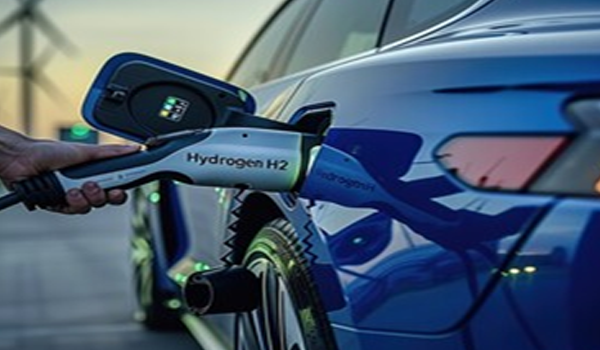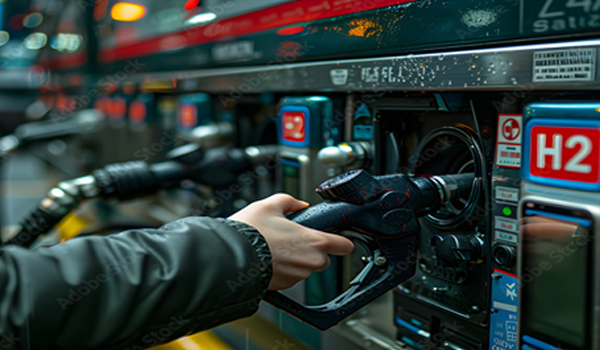Surging investments target 200,000 fuel cell electric vehicle (FCEV) units by 2030.
By Sanchita Mendiratta, Industry Analyst – Mobility
At CES 2024, hydrogen technology revealed significant strides in its quest to fulfil its potential as the future of sustainable transportation. The rapid advance of hydrogen-based, fuel cell electric vehicles (FCEVs) has been the result of government support, R&D investments, stronger supply chains, and the active participation of both private and public sector. Spurred by carbon-neutrality agendas, the US, China, the EU, Japan, and South Korea have laid down clear roadmaps and regulations for hydrogen development and deployment.
Infrastructure investments in hydrogen refueling stations, proactive government support in the form of subsidies, incentives, tax credits, and progressive regulatory policy are fast-tracking the development of the nascent hydrogen ecosystem. Stakeholder collaboration between governments, automotive companies and other ecosystem participants is further accelerating passenger FCEV uptake.

Currently, there are only around 100,000 FCEVs in operation. In comparison to their electric vehicle (EV) counterparts, the passenger FCEV segment is, therefore, relatively small and is projected to account for only around 0.1% of global sales by 2030. Such low penetration levels are attributed to multiple factors: the limited availability of FCEV models compared with BEVs and ICE vehicles, the limited number of automakers currently working on FCEVs, as well as challenges related to the resilience, efficiency, and storage of hydrogen-based fuel cells. The lack of consumer awareness about FCEVs and hydrogen fuel cell technology, concerns over range, resale value, and refueling networks are also likely to hamper adoption in the near term.
For more information about this market, please access our research reports, Passenger Fuel Cell Electric Vehicles Growth Opportunities, , Growth Opportunities in the North American Hydrogen Infrastructure Market for Trucks and Global Fuel Cell Trucks Growth Opportunities or contact [email protected] for information on a private briefing.
Targeting 200,000 FCEV units by 2030
While China is the world’s largest hydrogen producer, automakers from Japan and Korea are pioneering FCEV technology in passenger vehicles. Leading FCEV OEMs include Toyota, Hyundai, Honda, Mercedes-Benz, General Motors, BMW, and Audi. There have been substantial investments in fuel cell stack, systems and infrastructure with the aim of reaching 200,000 FCEV units by 2030.
The market is dynamic with several existing and proposed FCEV model launches. Automakers like Mercedes-Benz, Toyota, Hyundai, SAIC, GAC Group, FAW Group, and Changan Automobiles, among others, already have FCEV offerings. BMW, Great Wall Motor, Haima, Land Rover, and Honda are among those automakers planning to introduce new models alongside startups like Grove Hydrogen Granit, Riversimple Rasa, Nam X and Hyperion.
New partnerships are also the norm as the industry steps up. At CES 2024, Hyundai identified a ‘prominent’ role for hydrogen in its transition to becoming a carbon-neutral company by 2050. In 2023, Stellantis acquired a 33.3% stake in fuel cell supplier Symbio to develop 50,000 fuel cells annually by 2025, while Honda announced a partnership with GM to co-develop future fuel cell technologies. In 2022, Hyundai Motor declared a $6.7 billion investment in hydrogen, while BMW and Toyota announced a partnership to produce hydrogen FCEV.
Our Perspective
Low consumer demand has resulted in limited production volumes, resulting in high production costs and the inability to realize economies of scale. Manufacturing difficulties have been compounded by the limited supply of key components, including fuel cell stacks and hydrogen fuel tanks. Lowering hydrogen costs is, therefore, a major challenge that needs to be overcome. Potential strategies could include localizing hydrogen production, improving electrolyzer efficiencies, and increasing the use of renewable electricity as an input. In parallel, easy and economical access at hydrogen refueling stations will require the development of robust and seamlessly interconnected transportation infrastructure networks.
The rising demand for zero-emission vehicles has opened up the opportunity for automakers to boost investments in FCEV production. Ecosystem collaboration among technology firms, energy producers, and infrastructure developers will be crucial to accessing and building on complementary knowledge, skills and resources, while lowering costs, and achieving scale.
Diversifying product portfolios to tap into new application sectors like commercial vehicles, rail transportation, maritime vessels, and off-grid power generation will further help FCEVs automakers unlock new revenue streams.
With inputs from Amrita Shetty, Senior Manager, Communications & Content – Mobility




